13 Best Java Testing Frameworks For 2024
Salman Khan
Posted On: February 20, 2024
![]() 246396 Views
246396 Views
![]() 19 Min Read
19 Min Read
The fact is not alien to us anymore that cross browser testing is imperative to enhance your application’s user experience. Enhanced knowledge of popular and highly acclaimed testing frameworks goes a long way in developing a new app. It holds more significance if you are a full-stack developer or expert programmer.
Most developers prefer Java because of its platform independence and ease of use to build anything – from simple applications to sophisticated mobile apps, websites, and more. Although JUnit has been there with the developers to help them in automated unit testing, with the evolution of testing, many open-source frameworks have been developed based on Java and vary a lot from JUnit in terms of validation and business logic.
In this article, we dive deep into the best Java testing frameworks to look for in 2024. Here we will list the best Java frameworks to write your test cases in a standard format using automated testing frameworks.
TABLE OF CONTENTS
What are Java testing frameworks?
Java for automation testing is widely used due to its robust frameworks like JUnit, TestNG, and Selenium. These frameworks facilitate automated testing by providing a structured environment to create, execute, and manage test cases efficiently, making Java a preferred choice for automating software testing processes.
Java testing frameworks define the basic structure of the tests and the strategy for the entire testing cycle. Not only does it serve as a framework for testing the software, but it also provides a blueprint for how the whole process will be carried out. Java testing frameworks can include guidelines regarding test data, scripting, test results, and repositories.
Here are some of the advantages of using Java testing frameworks.
- They can significantly shorten the time to develop robust applications.
- They are particularly adept at solving security problems.
- Millions of people use Java testing frameworks. Thus there is a large amount of community support for them.
- They are economical.
Java survey statistics
According to a survey by Statista, Java is among the most widely used programming languages worldwide, where almost 30.55% of respondents mentioned that they successfully used Java.
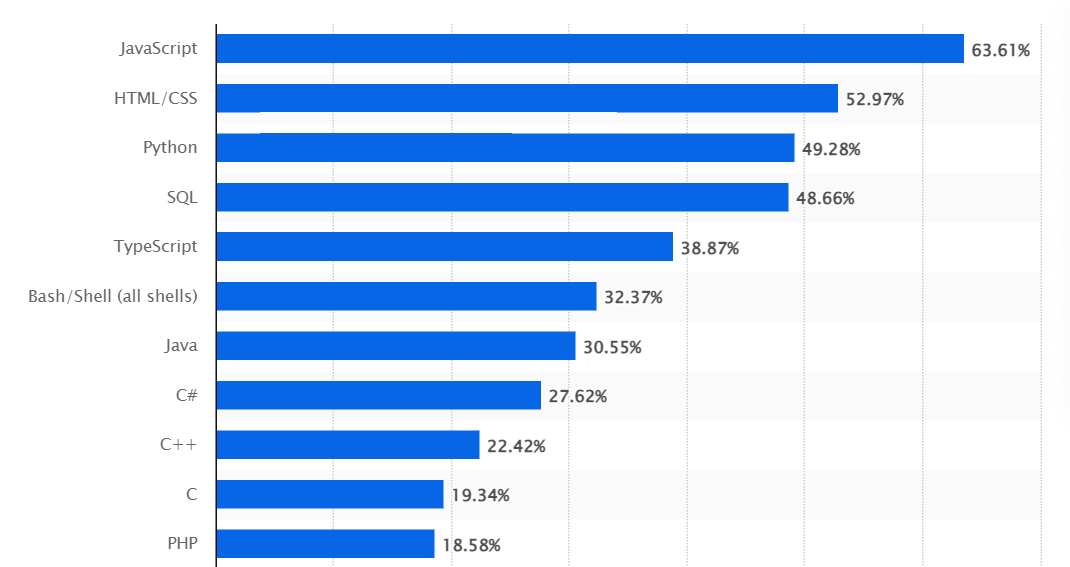
Another TIOBE Index survey shows Java as one of the most in-demand languages. As per TIOBE Index data, it has been in the top five programming languages for the last 20 years, with an overall rating of 8.88%.

13 Best Java Testing Frameworks
Before we dive into the frameworks, it’s crucial to understand why your testing framework may fall short. Watch the video below for detailed insights!
Below is a compiled list of the best Java testing frameworks.
Selenium
Selenium is an open-source framework used for web application testing across numerous browsers, browser versions, and operating systems. It is functional for almost every browser, works on the most popular operating systems, and its scripts can be written in popular programming languages like C#, Java, Python, PHP, and more.
Using Selenium, testers can expedite release cycles by automating repetitive test cases. It’s easy to integrate Selenium with CI/CD pipeline that speeds up and streamlines software deployments. Selenium provides a suite of tools for web browser automation, including Selenium IDE, Selenium WebDriver, and Selenium Grid for creating efficient automation tests.
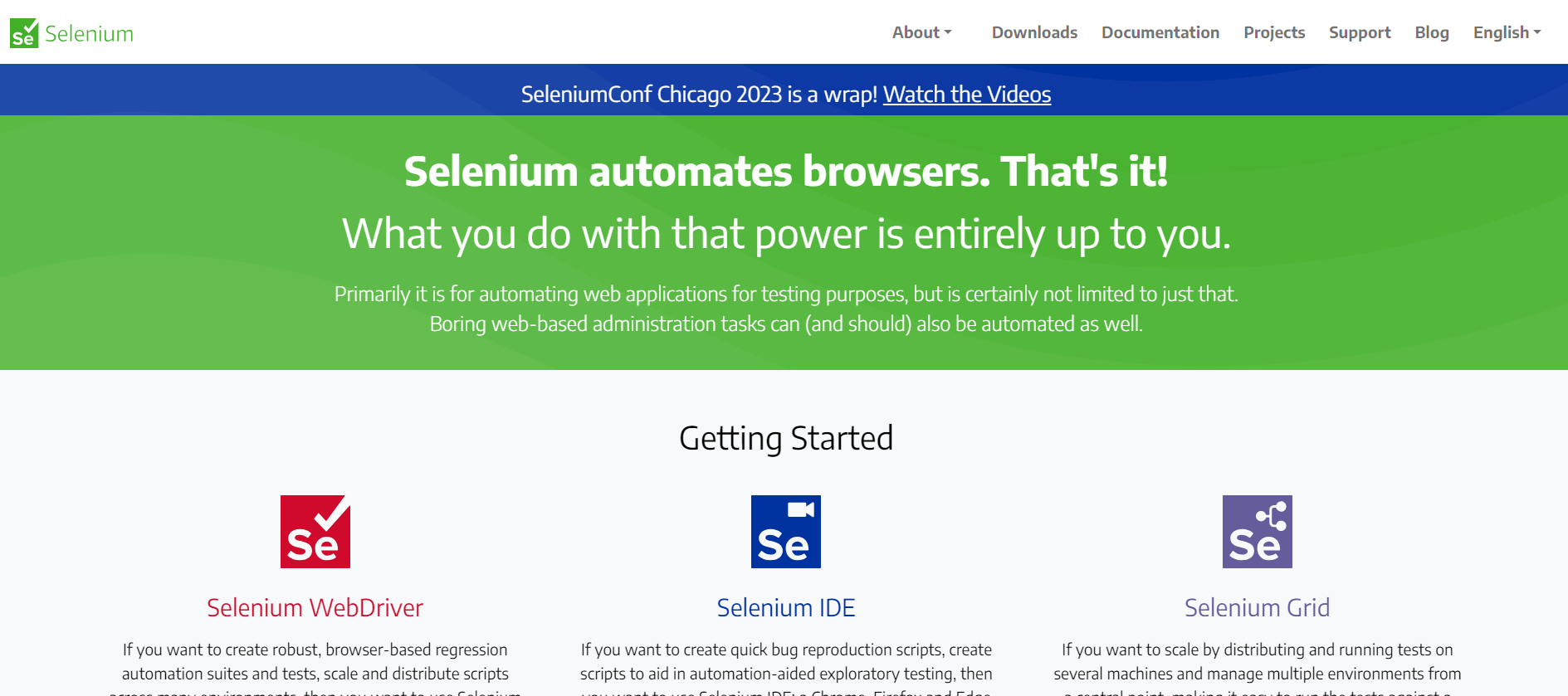
Advantages
- Selenium framework is open-source and has strong backing from the online community.
- Supports major programming languages like C#, Java, Python, Ruby, JavaScript, PHP, etc.
- Cloud-based Selenium automation grid lets you perform Selenium testing at scale. It helps reduce the investment required to create an in-house Selenium Grid infrastructure.
- Selenium can seamlessly integrate with popular test automation frameworks like JUnit, TestNG, and more.
- Supports parallel test execution, increasing efficiency and reducing test execution time.
- Selenium Integrated Development Environment gives a record and playback trait for authoring tests and creating Selenium scripts for future reference.
Disadvantages
- Absence of built-in reporting facility
- Only supports web application testing
- Time-consuming tool for test case creation.
Run your Selenium tests across 3000+ browser environments. Try LambdaTest Now!
JUnit
JUnit is one of the best Java testing frameworks. It plays a vital role in test-driven development and is a part of the collective unit test framework called xUnit.
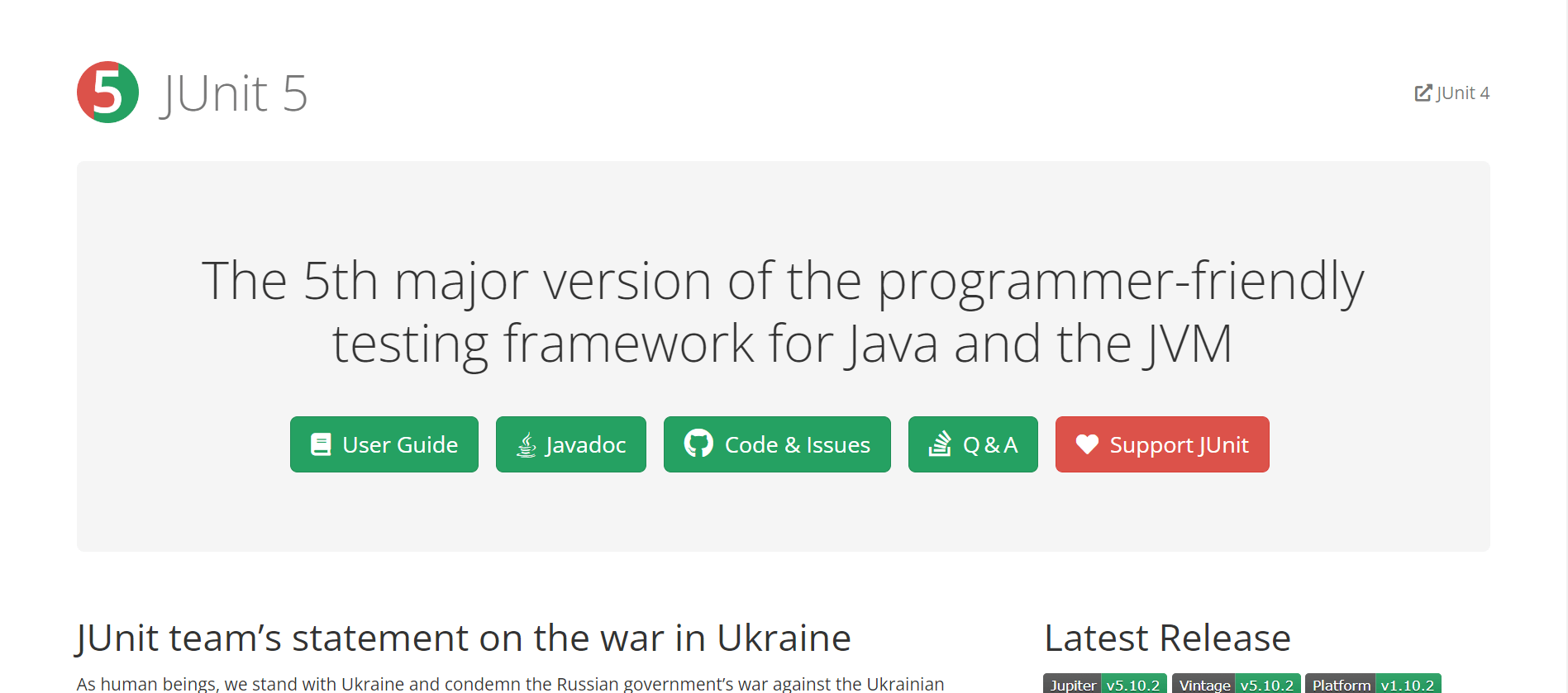
Furthermore, JUnit boosts the initiative of “to begin with testing rather than coding,” which highlights setting up the testing data for a part of code that should be tested before execution. This technique is akin to the “test a little, code a little” technique. It enhances the programmer’s productivity and program code’s stability, reducing the pressure on the programmer and minimizing the time spent on debugging.
JUnit 5.0 annotations added a lot of power and convenience to unit testing. JUnit annotations ease the process of writing unit tests for examining exceptions. Expert developers who follow the test-driven approach should first write & run the unit testing before writing other code. Once the code is written, testing must be carried out and checked for appropriate results. Once a new test code is added, all test scenarios should be re-executed to ensure everything is fine.
Advantages
- JUnit offers test runners to execute tests.
- Offers assertions to test expected outcomes.
- With the latest version of JUnit 5, exceptions are identified quickly. You can even execute test cases written in the old version of JUnit.
- You can also use it with Java 5 or the versions above.
Disadvantages
- The framework is unable to execute dependency tests. That is where we need TestNG.
TestNG
Developed by Cedric Beust, TestNG is an open-source automation testing framework inspired by JUnit and NUnit. The NG means Next Generation in TestNG. The TestNG framework is considered one of the best Java testing frameworks that help developers with features like sequencing, grouping, and parameterizing, thereby making the new test cases more flexible and eliminating the earlier frameworks’ drawbacks.
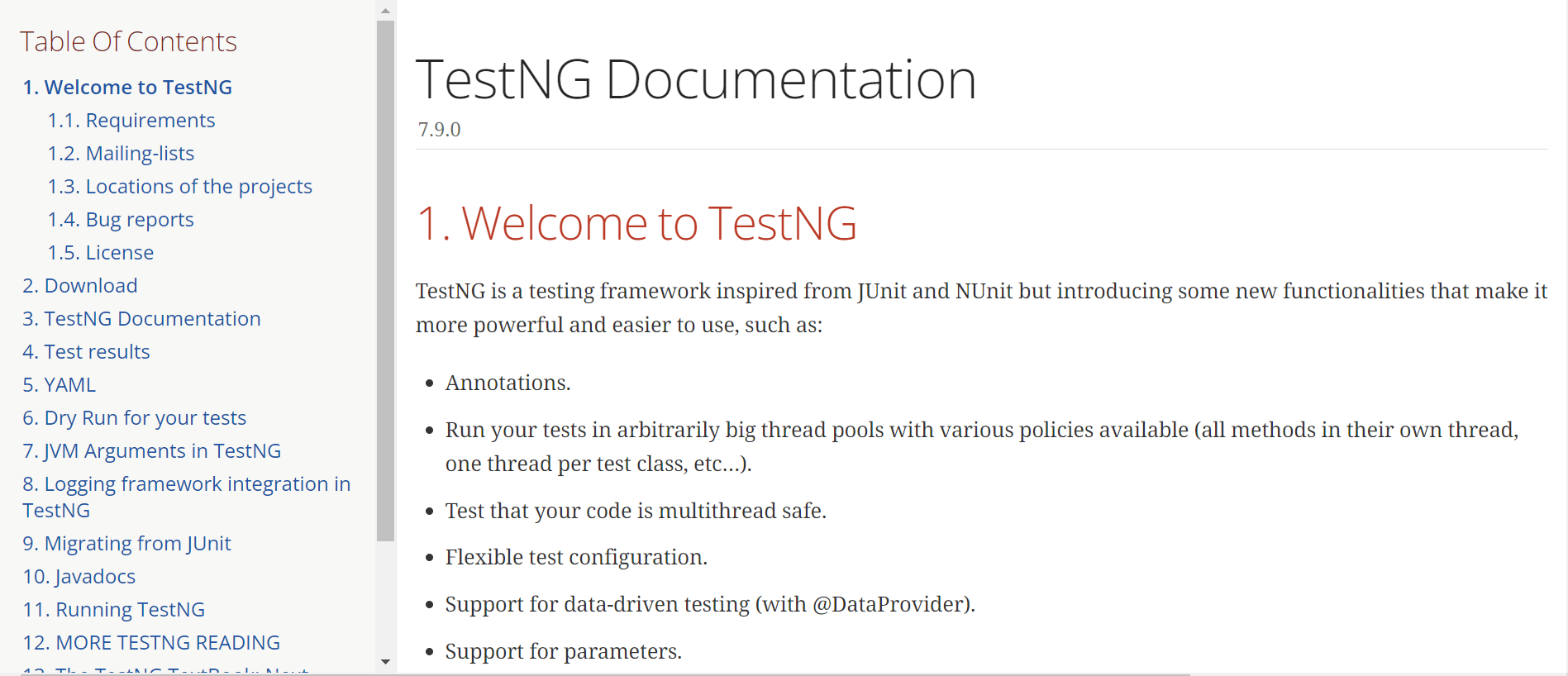
Advantages
Apart from overcoming the drawbacks of older frameworks, TestNG has several advantages.
- Provides different types of after/ before annotations to support different setup and cleanup choices.
- Test suites in this framework are configured mainly utilizing XML files (i.e., testng.xml)
- Provides flexible API plugin and runtime configuration.
- Supports dependent test methods.
- Support for multiple threaded testing.
- Allows users to perform data-driven testing.
Disadvantages
- You may only want to use TestNG if your project requires test case prioritization. Besides, setting up TestNG involves a bit of time.
Serenity
Serenity is yet another one of the best Java testing frameworks. It is an open-source library perfectly designed for BDD (Behavior-Driven Development) that expands the WebDriver and JUnit attributes. This is also a widely preferred test automation framework that enables you to write well-structured tests. Serenity can also integrate with existing BDD frameworks such as JBehave.

One of the best things about Serenity is that it supports several automated acceptance test solutions.
You can use this framework with JUnit to quickly write maintainable tests or incorporate the same with Selenium WebDriver for testing web apps. Serenity also supports RestAssured for testing REST API. The framework allows you to use any BDD (Behaviour-driven Development) tool like Cucumber. You can use it with popular project management tools like Jira.
Advantages
- Helps in writing cleaner and maintainable automated & regression tests.
- It can be used for automated web testing with Selenium.
- It can be integrated with other popular BDD tools like JBehave, and Cucumber, as well as test automation frameworks like JUnit.
- The framework helps the tester create test cases for REST API services.
Disadvantages
The only disadvantage of Serenity is just like JBehave. Constant communication between the project participants is required to utilize its exclusive feature of supporting behavior-driven development.
Selenide
Powered by Selenium, Selenide is one of the best Java testing frameworks for writing stable, precise, and expressive UI test cases for a java application. Testing modern web technologies like Ajax has certain complications, like a timeout. WebDriver is a popular tool for UI tests, yet it needs the feature to deal with a timeout. Selenide deals with all these problems in a simple manner.
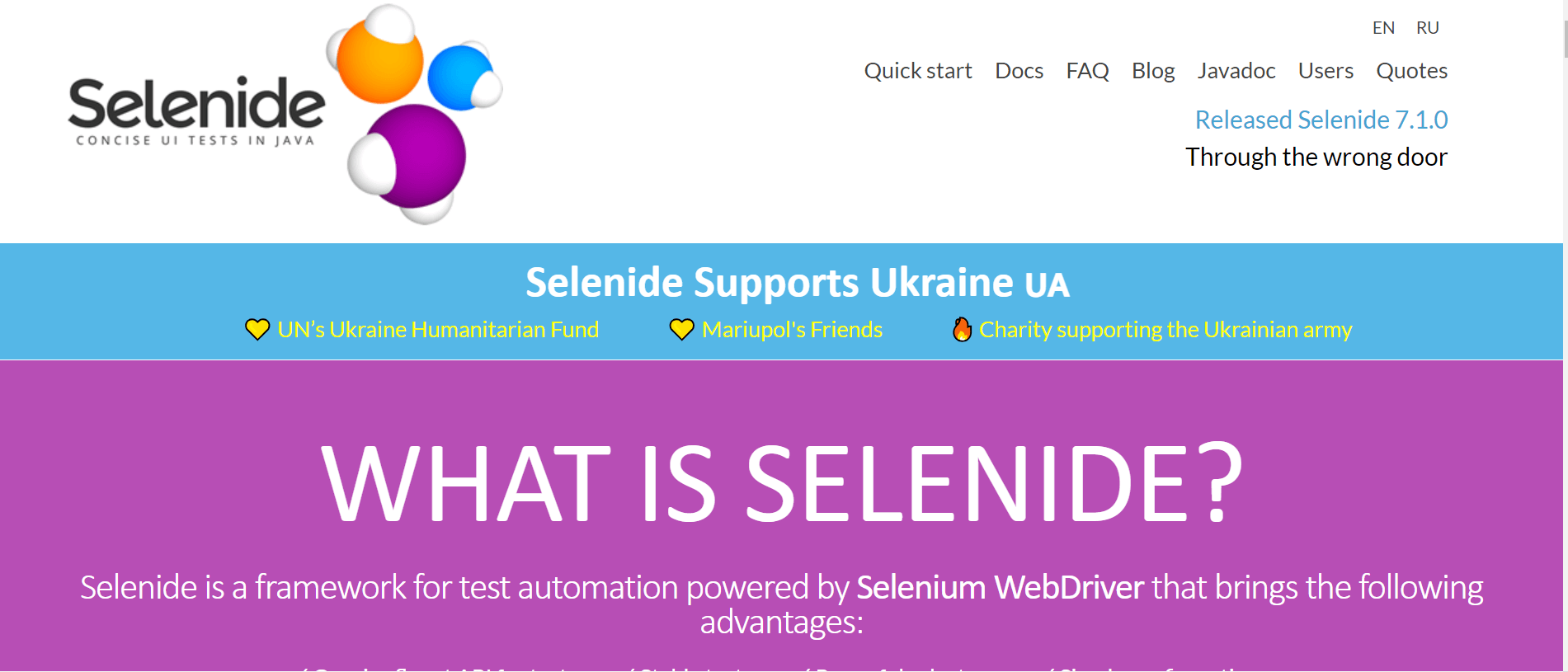
Also, with Selenide, it’s easier to grab and learn. You don’t need any requirements for Google and search for tutorials. All you need to do is focus on the business logic, and your job will be done just by a few simple lines of code.
Advantages
- Selenide automatically takes screenshots when your test fails. There is no need for you to do anything about it.
- You don’t need to use WebDriver directly. Selenide will automatically start and stop the browser when necessary.
- Testing Ajax applications often requires waiting until some element changes state. There are built-in methods for waiting in Selenide.
- Provides a concise API for making your tests shorter and more readable.
- Supports testing of applications developed using AngularJS.
We have yet to find any notable disadvantage to using Selenide. Let us know if you have found any limitations which may impact your work.
Cucumber
Cucumber is an automation testing framework for behavior-driven development (BDD). It allows testers to write human-readable acceptance tests that describe the behavior of a system.
These tests are written in a language called Gherkin, which is a simple, plain-text language that non-technical stakeholders can easily understand. Gherkin files contain steps describing a system’s behavior in a series of “Given-When-Then” statements.
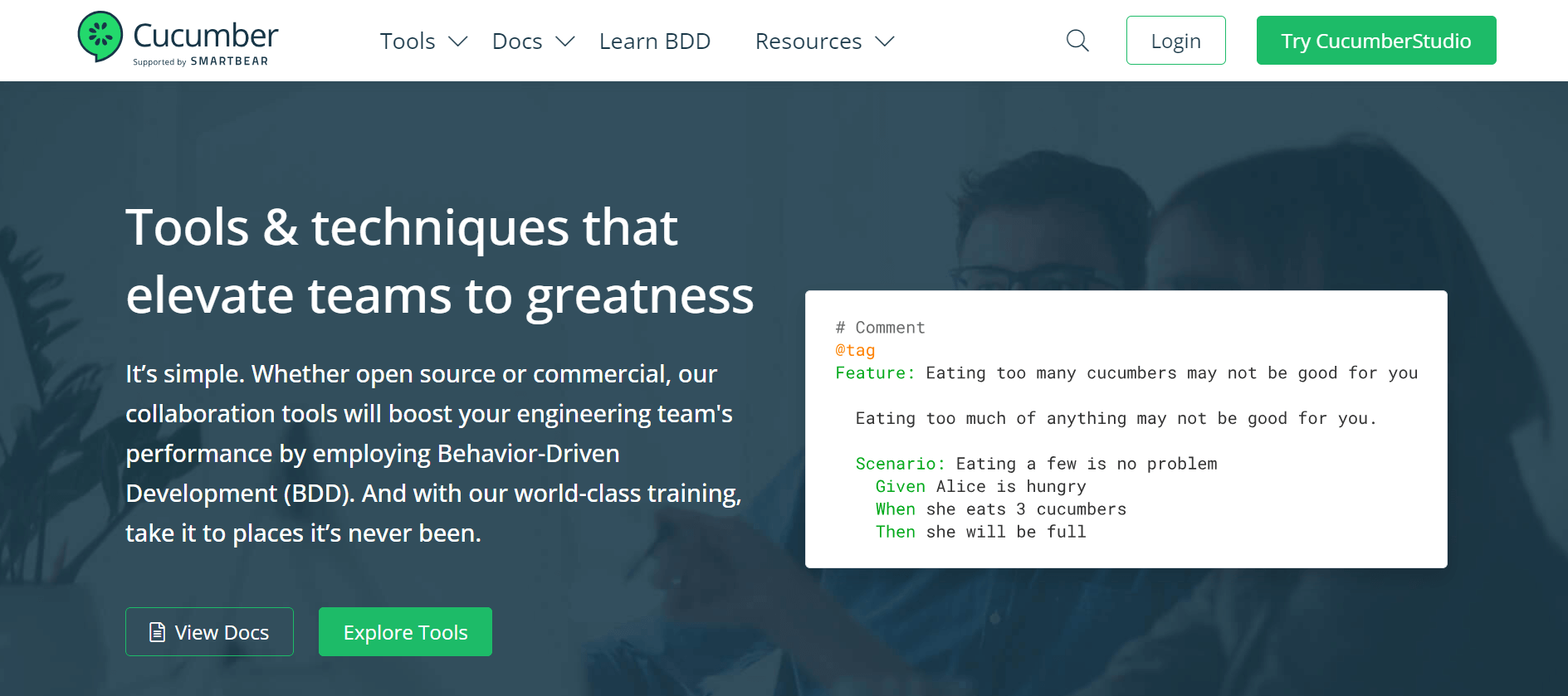
Advantages
- Rather than creating ‘tests,’ it focuses on defining ‘behavior.
- Allows you to understand how the system should function from the developer’s and customer’s perspectives.
- The improvement in code quality leads to lower maintenance costs and reduces the project’s associated risks.
- Supports step reusability that reduces the need to write the same code repeatedly.
Disadvantages
Mockito
Mockito is an open-source and one of the best Java testing frameworks. This well-known Java-based mocking framework is primarily used for unit testing. The primary benefit of using Mockito is that there are no requirements to create mock objects, as the framework generates them automatically. It creates mocks using annotations.
You can use Mockito for writing behavioral-based development tests with syntactic sugar (i.e., syntax lies in programming languages that assist in trouble-free reading). This internally uses the Java Reflection API for creating mock objects for a precise interface.
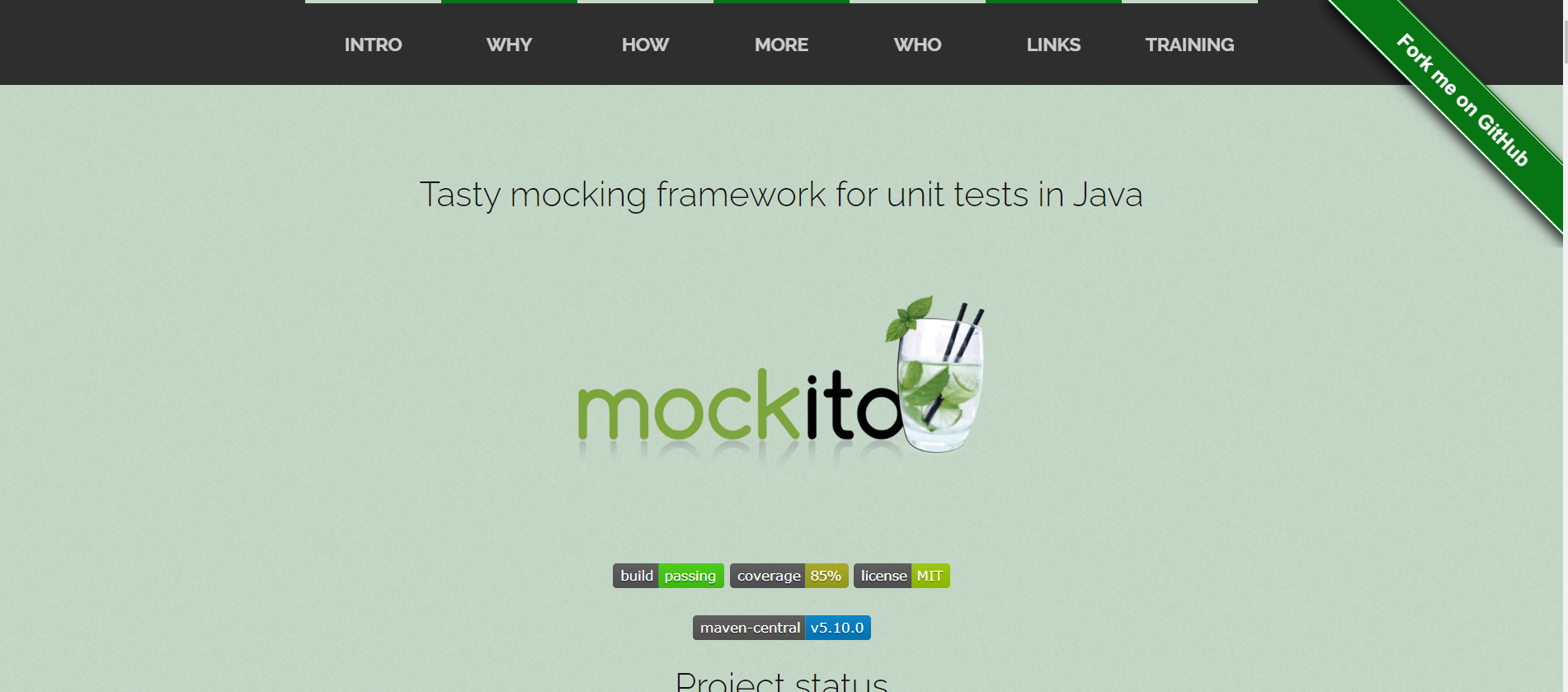
The key goal of using the Mockito framework is to ease the test development by mocking exterior reliance and utilizing it in the test implementation. Therefore, it gives a simplified test code that is understandable and easy to modify. We can also use Mockito with other frameworks like TestNG and JUnit.
Advantages
- Easily create mock objects using annotations like @Mock.
- As mock objects are formed at runtime, renaming a method or interface does not impact the test code.
- Mocks are cost-effective and ideal for creating POC (proof of concept).
- Service Mocking lets you leverage the capabilities offered by TDD (Test Driven Development)
- It handles void methods better than other mocking frameworks such as EasyMock.
Disadvantages
- No support for local variable mocking.
- No support for private and static methods.
- Any subclass we write has no control over the private fields.
Spock
Spock is among the best Java testing frameworks, allowing QA teams to perform data-driven testing. It offers compatibility with all the languages that JVM supports. Spock’s UI is magnificent compared to other Java testing frameworks. The code readability and documentation are neat, plus it can interpret plain English sentences, making it a very convenient Java testing framework for 2024.
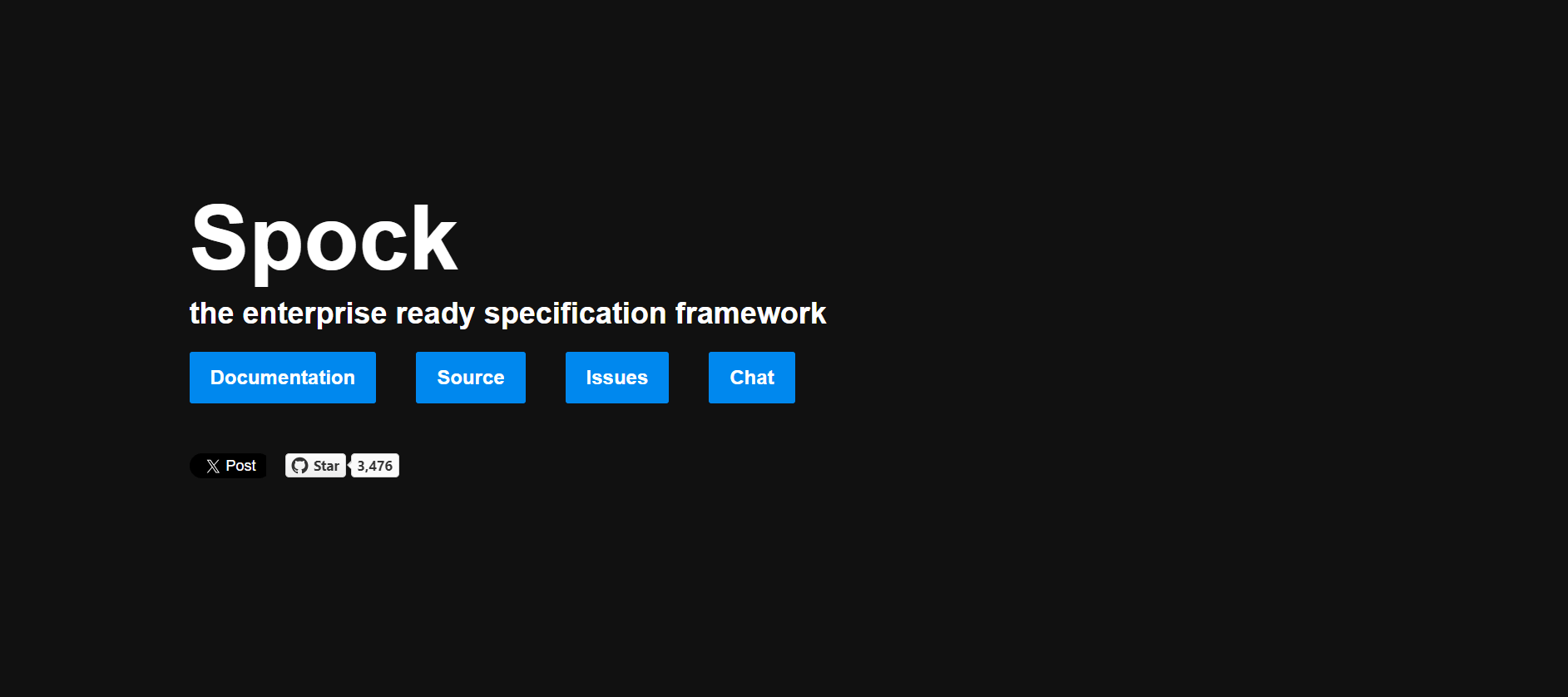
Advantages
- Compatible with all leading Integrated Development Environments (IDEs).
- It works with both Maven and Gradle.
- It is compatible with all continuous integration servers thanks to the JUnit runner
- Access to in-built mocking and stubbing.
- Shorter and crispier parameterization.
- Expressive and simplistic DSL (Domain-Specific Language).
Disadvantages
- Requires a basic understanding of Groovy.
Gauge
Gauge is a behavior-driven development framework launched by Thoughtworks.Inc. It is a Java-based, open-source, automated testing framework specializing in acceptance testing in low-code environments. Gauge supports external data sources and is developed in a business-oriented language.

Advantages
- An extensive range of templates is accessible in the language of your choice.
- Command-Line support eases the integration with the best CI/CD tools.
- Easily create your plugin using the open-source Gauge API.
- Rapidly identify anomalies through screenshots of event failures.
- Enables you to generate scalable tests through parallel execution and provides integrations with cloud-based solutions to address the objectives of rapid cross browser testing.
Disadvantages
- Finding people with expertise or knowledge of the Gauge framework is challenging.
- Security and safety are still major concerns.
HttpUnit
HttpUnit is an open-source functional test framework based on JUnit. HttpUnit is also used to test websites without the requirement for a web browser. The framework also supports automatic page redirection, HTTP basic access authentication, HTML form submission, JavaScript, and cookies.
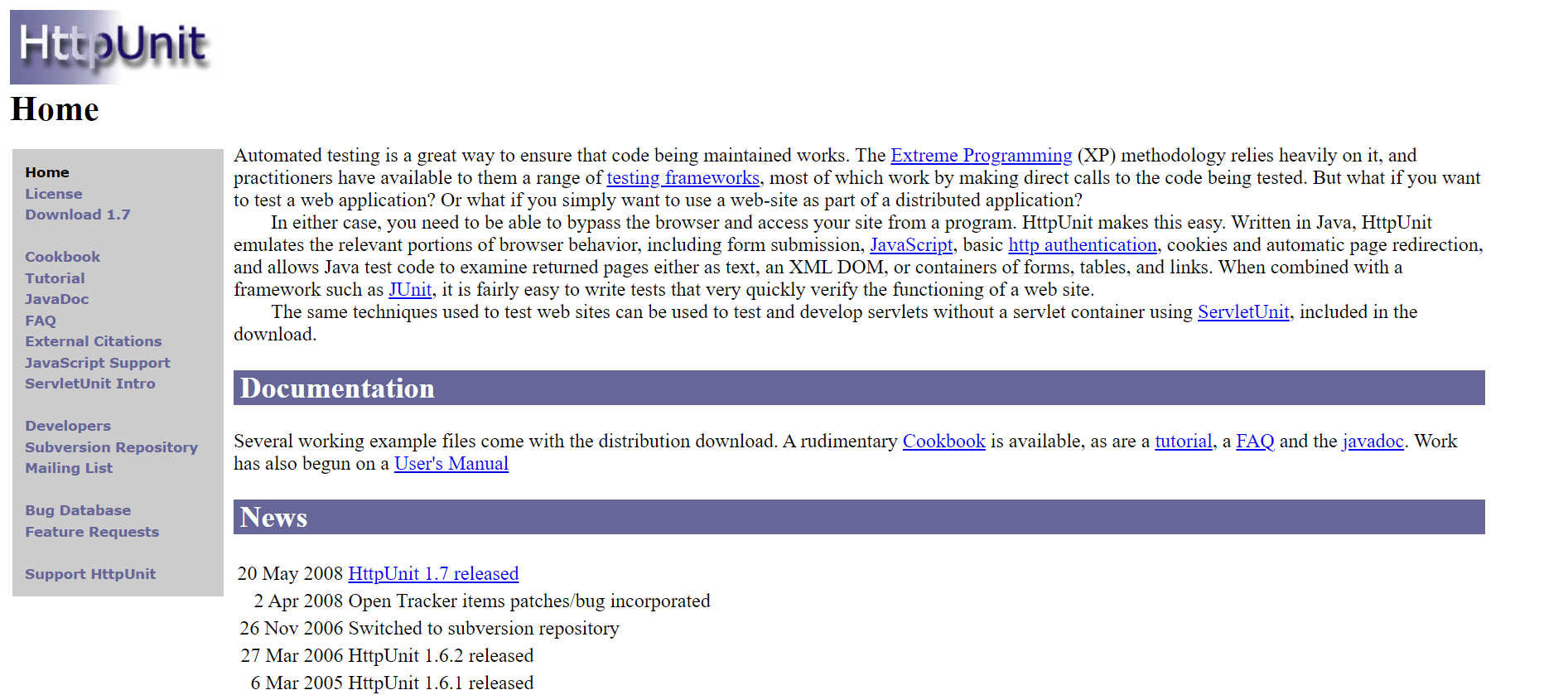
This permits Java test code to process restored pages like XML Document Object Model (DOM), text, or containers of tables, forms, links, etc. This Java testing framework can be integrated with JUnit to write tests with ease. It gives an API to interact with HTTP and HTML servers.
Advantages
- Used to test websites without any web browser.
- Support for HTTPS and HTTP protocols, along with support for HTML responses.
- Better JavaScript support enables imitating the actions of the configured browser (Internet Explorer or Firefox).
- Support for proxy server and JavaScript support.
- Can combine with other frameworks, such as JUnit, for load testing.
Disadvantages
- Several browsers might not be considered for testing.
- It can take time to create a complex test.
JBehave
We all know about Behavior Driven Development (BDD). It is the type of testing that transparently describes acceptance testing to the business users. JBehave is another one of the best Java testing frameworks used for BDD testing, primarily used with Selenium WebDriver for Java.
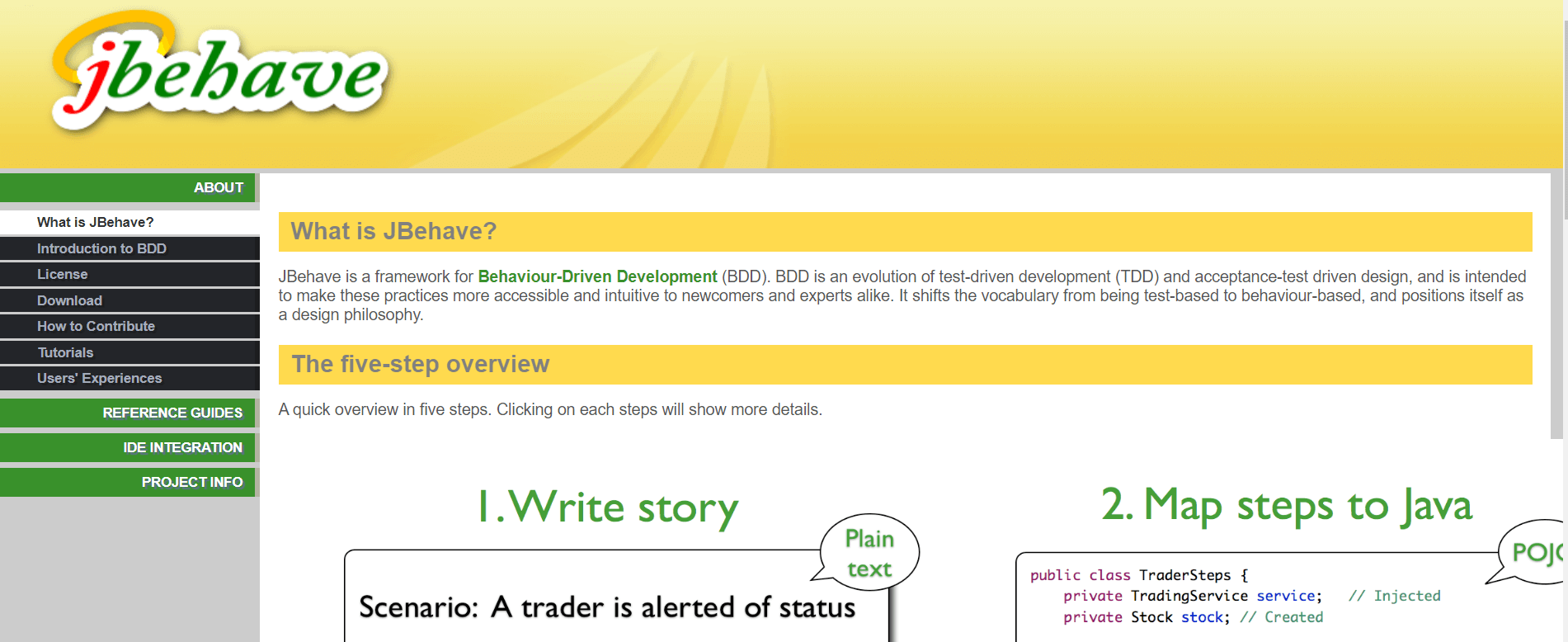
The primary objective behind the introduction of JBehave is to make it possible for newcomers to understand and get familiar with BDD quickly. It is a design philosophy that makes the testing phase of an application more based on its behavior.
On a side note, you can automate your Selenium BDD test suites on a scalable LambdaTest cloud grid with Behave framework.
Advantages
- Stories can be executed simultaneously, stating the number of concurrent threads
- Shallow learning curve as user stories are written in Gherkin or JBehave syntax.
- Steps class specifications and annotation-based configuration.
- Groovy scripting for writing configuration and Steps instances.
- Dependency Injection supports enabling configuration and stage instances composed through your favorite container (PicoContainer, Needle, Guice, Spring, Weld).
- Ant integration permits stories to be run through an Ant task.
- Maven integration permits stories to be carried out via the Maven plugin at a specified build stage.
Disadvantages
- The success of a BDD testing tool depends mainly on the communication carried out between different members involved in a project, the stakeholders, the developers, the testers, as well as the management of the organization. Lack of communication may lead to unanswered questions and doubts, ultimately leading to a buggy application or an application not satisfying the business requirement, resulting in all the parties blaming each other.
Spring
Spring MVC includes a convenient test framework. It enables extensive testing without even launching a web container. This is one of the most excellent libraries for developing automated tests for Spring applications. It provides excellent assistance to Spring-powered applications, including MVC controllers, while writing unit and integration tests. These tools make it simple to automate the testing of your Spring MVC application.

Advantages
- Allows the development of dependency injection, enabling the code to be container-independent.
- Mock objects can help test isolated code using the new operator.
- Contributes to code componentization and layering.
- Offers a set of mock Servlet API objects.
- It provides a powerful abstraction to JEE specifications such as JMS, JDBC, JPA, and JTA.
Disadvantages
- It would be pretty challenging to learn if you have yet to gain development experience in the field. It is difficult due to new programming methods.
Geb
Geb brings together the grace of jQuery content selection and the capabilities offered by WebDriver, Page Object Modelling (POM), and clarity offered by the Groovy language. Geb is open-source and licensed in the Apache License (Ver. 2.0).
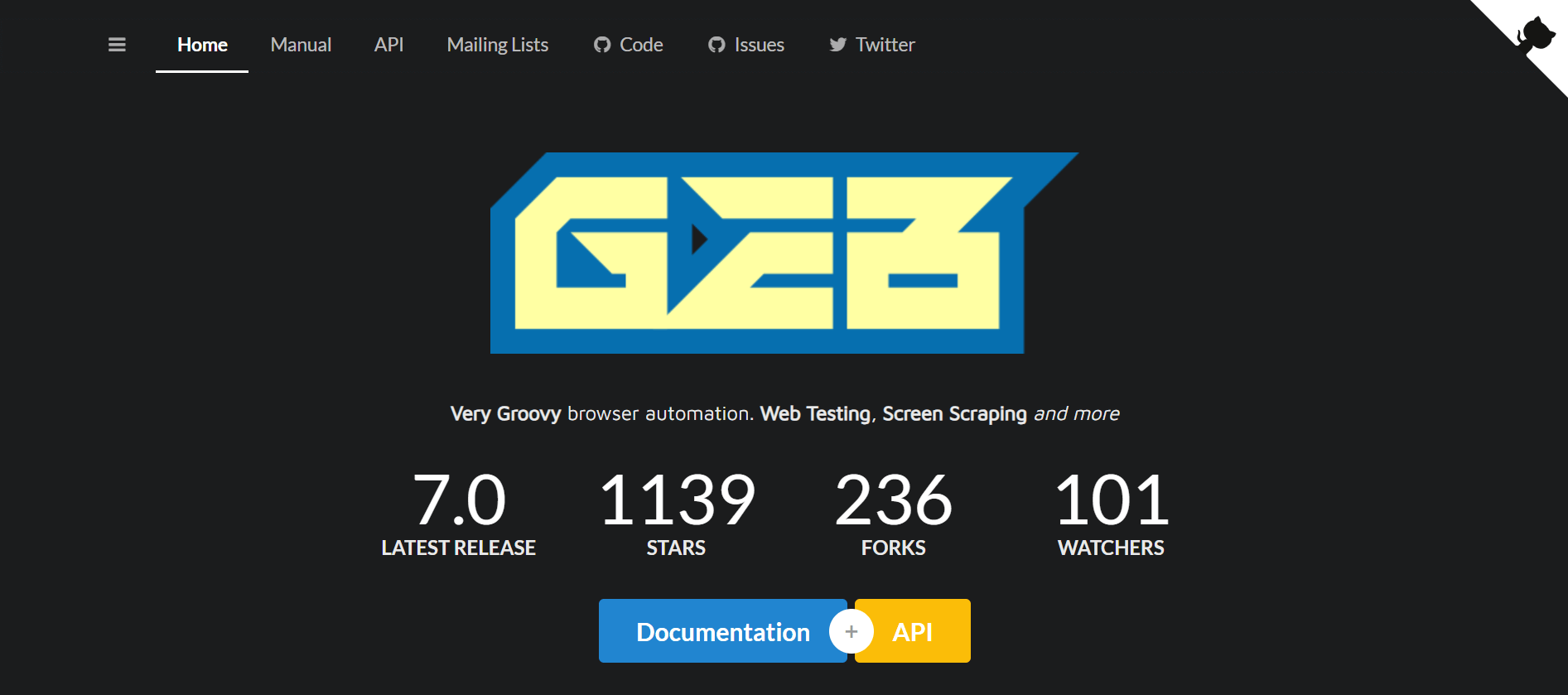
Advantages
- It lets you execute the tests faster.
- Compatible with browsers such as Firefox, Chrome, IE, and HTMLUnit.
- Using Geb for automated tests requires minimal test code modifications if there are any UI changes in the app (or website). This minimizes the duplication of code.
- It supports the Page Object Model design pattern by default.
Disadvantages
- Geb uses the Groovy programming language to run WebDriver. As a result, when you use WebDriver via Geb, only the Groovy programming language will be supported. However, using WebDriver directly supports various languages such as Ruby, C#, Python, and Java.
Developing quality software is a challenging task for any developer. Mastering testing skills is the best way to ensure you build a lasting product. Java has evolved over the years, and Java testing frameworks have emerged to keep up with the need for effective test automation.
The perfect Java testing framework for your website or apps can be used for performing automated browser testing with ease. Some of the most best Java testing frameworks mentioned above are highly recommended for Selenium.
LambdaTest, an AI-native test orchestration and execution platform, supports all the major Java test automation frameworks and lets you perform Java automation testing at scale on an online Selenium Grid of 5000+ real browsers and platforms. You can further expedite your software release cycles by multiple folds with parallel testing.
Subscribe to LambdaTest YouTube Channel and stay updated with detailed tutorials around Selenium, Cypress testing, and more.
Test your websites on the cloud Selenium Grid.Try LambdaTest Now!
Conclusion
Each framework is unique and has its pros and cons. It all comes down to your project requirements and the testing you want to conduct for your software applications.
In the current agile age, developers are also required to get involved in testing: knowledge and the importance of testing separate professional Java developers from amateurs. You don’t need to be an expert, but you should have the basic knowledge to write test cases that can automatically validate your code.
In this article, we have gone through the 13 best Java testing frameworks preferred by developers and testers. Based on the comparison, if you are sincere in your job and want to become an expert developer and a tester, the frameworks mentioned above are something you will find helpful in your daily assignments.
Frequently Asked Questions (FAQs)
What is testing framework in Java?
A testing framework in the context of Java is a set of classes and methods that enable developers to write and execute unit tests, integration tests, and functional tests for web applications.
What are testing tools in Java?
Testing tools in the context of Java are applications that can be used to write, run, and analyze the results of test scripts.
Which Java framework is used to unit test?
JUnit is a popular open-source testing framework for writing and running unit tests. It is a simple, easy-to-use framework that enables developers to build and execute repeatable automated tests.
Got Questions? Drop them on LambdaTest Community. Visit now














